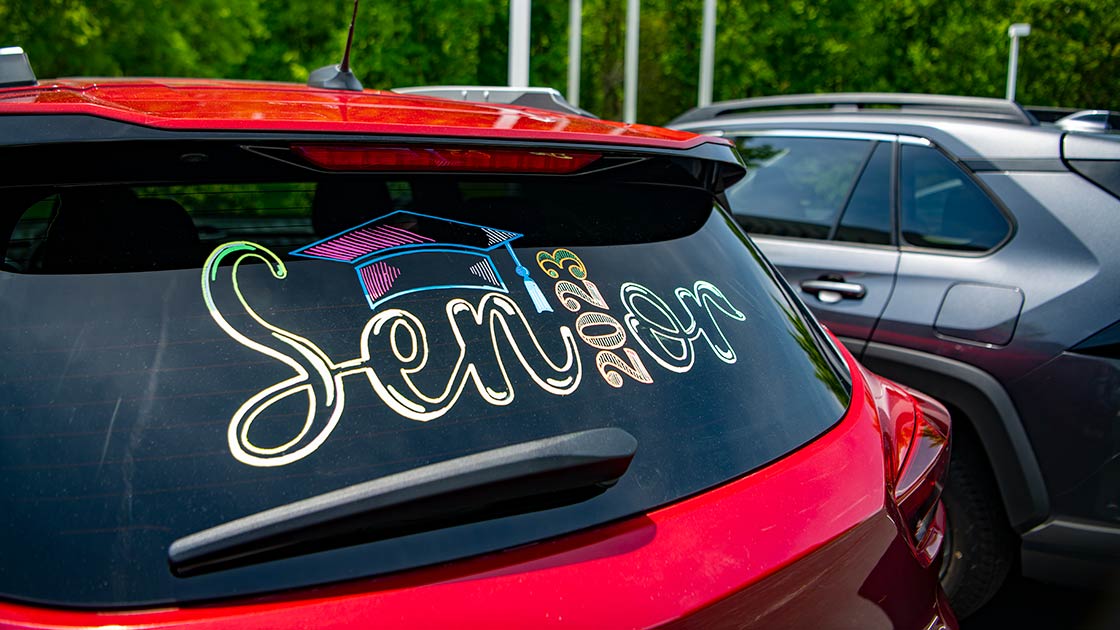IIHS, Consumer Reports update teen vehicle recommendations for 2023
May 23, 2023

Families looking for a safe, practical set of wheels for a recent high school graduate or other young driver can choose among 46 used vehicles and 16 new ones on this year’s teen vehicle list from the Insurance Institute for Highway Safety (IIHS) and Consumer Reports (CR).
“As parents, we can’t control what happens on the road once our teen driver pulls out of the driveway,” says Jennifer Stockburger, director of operations at CR’s Auto Test Center. “But we do have some say in the type of vehicle they drive off in, and that can make a huge difference. This list can help parents find vehicles that check all the boxes.”
Finding an appropriate, affordable vehicle can be challenging, as prices for new and used vehicles remain stubbornly high. In contrast to previous years, all but a handful of the vehicles on this year’s list of recommended vehicles for teens cost more than $10,000.
“It’s unfortunate that in recent years we’ve had to relax our price limits for this list, but we won’t budge on the other criteria,” said IIHS Chief Research Officer David Zuby. “With road safety statistics headed the wrong way, it’s more important than ever that inexperienced, young drivers have vehicles with a high degree of occupant protection as well as good emergency handling, braking and reliability.”
Overall traffic deaths have been rising in the last few years after decades of declines. Nearly 43,000 people died on the roads in 2021, a 10 percent increase over 2020. Teen road deaths have followed the same pattern, increasing 11 percent to 3,058 in 2021.
What makes a good teen vehicle? First of all, it should be fairly sedate. Off the bat, IIHS and CR exclude sports cars and other vehicles with excessive horsepower. These vehicles make it too easy to speed and can tempt young drivers to show off.
Secondly, it shouldn’t be too small. The list has no minicars or vehicles under 2,750 pounds because small, light vehicles don’t provide enough protection in multiple-vehicle crashes.
It also shouldn’t be too big. Although it might be tempting to keep your child ensconced in a large SUV or pickup because it offers greater crash protection, those larger vehicles can be hard to handle and often have increased braking distances. They also pose more risk to others on the road, including pedestrians, bicyclists and people in smaller vehicles. Moderately sized vehicles provide a better balance of crash avoidance and crash protection.
When it comes to crash protection, there are different criteria for new and used vehicles. Older models are judged by the tests that IIHS was conducting when they were introduced.
Recommended used vehicles are divided into Best Choices, which this year range in price from $7,800 to $20,000, and Good Choices, which start at $6,600 and go up to $14,500. Best Choices offer a somewhat higher level of safety. This year there are 26 Best Choices and 20 Good Choices.
Both groups have:
- standard electronic stability control
- above-average reliability, based on CR’s member survey, for the majority of the years listed
- average or better scores from CR’s emergency handling tests
- dry braking distances of less than 145 feet from 60 mph in CR’s brake tests
- good ratings in four IIHS crashworthiness tests — original moderate overlap front, original side, roof strength and head restraints
- four or five stars from the National Highway Traffic Safety Administration (if rated)
In addition, the Best Choices have a good or acceptable rating in the IIHS driver-side small overlap front test, which was launched in 2012. The test replicates what happens when the front left corner of a vehicle collides with another vehicle or an object like a tree or utility pole.
The top tier of used vehicles also excludes vehicles that have substantially higher than average insurance claim rates under medical payment, personal injury protection or bodily injury liability coverage. The first two coverage types pay for injuries to occupants of the insured vehicle; the third one covers injuries to other road users. The Highway Loss Data Institute, an IIHS affiliate, collects and publishes insurance loss data by make and model every year. The results are adjusted for driver age, gender and other factors that could affect risk.
Recommended new vehicles are held to an even higher standard than the Best Choices of the used vehicles.
“If you’re spending the money on a new vehicle that’s likely to be in your family for many years, we want you to get the most safety available,” Zuby said. “That means the highest ratings in our latest suite of tests.”
This year’s recommended new vehicles are all 2023 IIHS Top Safety Pick or Top Safety Pick+ winners. That means they have good ratings in three frontal crash tests — driver- and passenger-side small overlap and the original moderate overlap — a good or acceptable rating in the updated side test, advanced or superior ratings for front crash prevention (including daytime pedestrian detection), and standard acceptable- or good-rated headlights. Injury claim rates from recent model years are also factored in.
The new vehicles, which range from $23,000 to $39,800, also rank at the top of their respective classes in CR’s evaluations. They have average or better predicted reliability, and they meet the same criteria for emergency handling as the used vehicles. Compared with the used vehicles, they are held to a tighter braking distance requirement of 140 feet. They also receive a rating of good or better from CR for ease of use of their controls.
Although the recommendations are intended for young drivers, they can be a resource for anyone looking for a safe, reliable and affordable vehicle. The new-vehicle section is especially useful for parents of younger children who might be buying a vehicle for their own use with an eye toward handing it down to a new driver in the future.